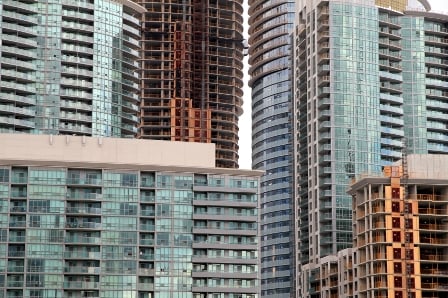The GTA saw its sales slow following the Ontario Fair Housing Plan while recoveries are underway in some other major markets, according to a report released today

The GTA saw its sales slow following the Ontario Fair Housing Plan while recoveries are underway in some other major markets, according to Royal LePage’s latest report, released Thursday.
“Following a period of unprecedented regional disparity in activity and price appreciation, we are now seeing a return to healthy growth in the majority of Canadian housing markets,” said Phil Soper, president and CEO, Royal LePage. “The white-hot markets are moderating to very warm; the depressed markets are beginning to grow again. Canadian housing is in great shape – a statement that I certainly did not make last quarter.”
The Greater Vancouver Area home prices are expected to resume an upward trajectory, according to the report, following a slight correction that began last August.
Meanwhile in Alberta the economic recovery continues as Calgary saw its strongest year-over-year price gains since the oil downturn.
Toronto, however, is a different story. Soper calls it “Canada’s least healthy” market where Q1 sales slowed in combination with affordability issues.
“The rate of national house price appreciation that we experienced in the second quarter continues to be above what we would consider a normal range, driven primarily by very strong year-over-year price growth across much of Ontario,” Soper said. “Yet the GTA’s recent drop in sales activity may well signal calmer waters ahead for the province. The 20 to 30 per cent year-over-year increases in home values that characterized Toronto and its adjoining areas in recent months are not, in our view, sustainable or healthy.
“Now, as inventory inches higher and demand slows to a more orderly pace, some much needed balance has been returned to the market. For the first time in years, buyers are able to include reasonable conditions in their offers and multiple bid situations are somewhat less frequent.”
The brokerage forecasts a national aggregate price increase of 9.5% -- at $617,773 -- by the end of the year.
“The Royal LePage National House Price Composite, compiled from proprietary property data in 53 of the nation’s largest real estate markets, showed that the price of a home in Canada increased 13.8 per cent year-over-year to $609,144 in the second quarter,” Royal LePage said in the report. “When broken out by housing type, the price of a two-storey home rose 14.6 per cent year-over-year to $725,391, while the price of a bungalow increased by 10.7 per cent to $511,965. During the same period, the price of a condominium climbed 13.4 per cent to $397,826.”
“Following a period of unprecedented regional disparity in activity and price appreciation, we are now seeing a return to healthy growth in the majority of Canadian housing markets,” said Phil Soper, president and CEO, Royal LePage. “The white-hot markets are moderating to very warm; the depressed markets are beginning to grow again. Canadian housing is in great shape – a statement that I certainly did not make last quarter.”
The Greater Vancouver Area home prices are expected to resume an upward trajectory, according to the report, following a slight correction that began last August.
Meanwhile in Alberta the economic recovery continues as Calgary saw its strongest year-over-year price gains since the oil downturn.
Toronto, however, is a different story. Soper calls it “Canada’s least healthy” market where Q1 sales slowed in combination with affordability issues.
“The rate of national house price appreciation that we experienced in the second quarter continues to be above what we would consider a normal range, driven primarily by very strong year-over-year price growth across much of Ontario,” Soper said. “Yet the GTA’s recent drop in sales activity may well signal calmer waters ahead for the province. The 20 to 30 per cent year-over-year increases in home values that characterized Toronto and its adjoining areas in recent months are not, in our view, sustainable or healthy.
“Now, as inventory inches higher and demand slows to a more orderly pace, some much needed balance has been returned to the market. For the first time in years, buyers are able to include reasonable conditions in their offers and multiple bid situations are somewhat less frequent.”
The brokerage forecasts a national aggregate price increase of 9.5% -- at $617,773 -- by the end of the year.
“The Royal LePage National House Price Composite, compiled from proprietary property data in 53 of the nation’s largest real estate markets, showed that the price of a home in Canada increased 13.8 per cent year-over-year to $609,144 in the second quarter,” Royal LePage said in the report. “When broken out by housing type, the price of a two-storey home rose 14.6 per cent year-over-year to $725,391, while the price of a bungalow increased by 10.7 per cent to $511,965. During the same period, the price of a condominium climbed 13.4 per cent to $397,826.”



